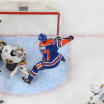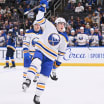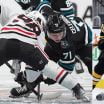GREENBURGH, N.Y. -- New York Rangers forward J.T. Miller nodded his head knowingly upon hearing the evaluation of his game. He knew it was true.
Miller has been a better player for the Rangers the past two months when coach Alain Vigneault has used him at right wing on the fourth line with center Oscar Lindberg and either Tanner Glass or Jesper Fast at left wing than he has been when he's been used in a top-nine role.
He has skated better. He has commanded the puck more. He has held onto it, drawn defenders to him and brought it to the net to set up scoring chances. It's everything he hasn't done when he's played in a top-nine role, mostly with center Kevin Hayes and either Fast of Michael Grabner at left wing.
J.T. Miller thriving on Rangers' fourth line against Senators
Forward has found success with simpler approach, hopes it continues in Game 6


















